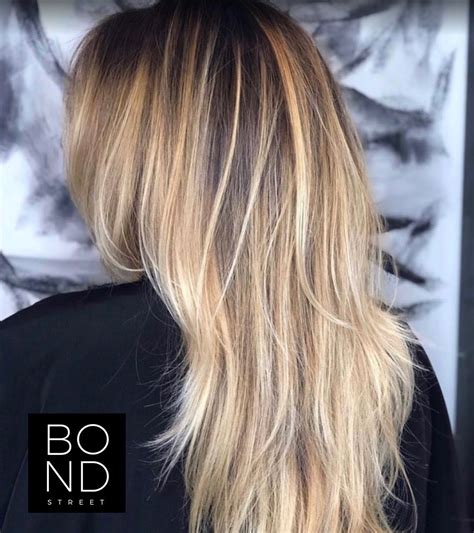Introduction

In the realm of hair coloring, balayage has emerged as a technique that effortlessly captures the essence of sun-kissed strands. Originating in France, this freehand painting technique adds natural-looking highlights to your hair, creating a gradual transition from roots to tips. Balayage is particularly well-suited for Asian hair, enhancing its inherent beauty and versatility with subtle, yet striking results.
The Allure of Balayage for Asian Hair
Low Maintenance: Unlike traditional highlights that require frequent touch-ups, balayage can last for several months, making it an ideal choice for those seeking a low-maintenance hair color.
Natural-Looking: Balayage replicates the gradual lightening effect of sun exposure, creating seamless blends that complement Asian hair’s natural undertones.
Versatile: Balayage can be customized to suit any hair length or texture, from long, flowing locks to shoulder-length bobs, infusing a touch of summery allure into your style.
Achieving the Perfect Balayage
Consultation: A detailed consultation with your stylist is crucial before balayaging Asian hair. Discuss your desired results, hair history, and any previous chemical treatments to ensure a tailored approach.
Sectioning: Your stylist will section your hair into smaller parts to ensure even application of the lightener. Proper sectioning is essential for creating natural-looking, blended results.
Lightener Application: Carefully formulated balayage lighteners are applied freehand to the selected sections of hair. The stylist will consider your hair’s porosity and underlying pigment to achieve the desired level of lift.
Processing Time: The lightener is left to process for the appropriate amount of time, which varies depending on your hair’s texture and the desired result.
Toning and Glossing: After the lightener has been rinsed, your stylist may apply a toner or gloss to enhance the color, neutralize unwanted tones, and add an extra touch of shine.
Types of Balayage for Asian Hair
Babylights: This technique involves applying extremely fine highlights to create a natural-looking, sun-kissed effect that replicates the appearance of baby hairs.
Reverse Balayage: A unique variation where the hair is lightened from the roots down to the mid-lengths, resulting in darker tips that transition into subtly lighter roots.
Face-Framing Balayage: Balayage highlights are strategically placed around the face to frame and enhance the cheekbones and jawline, creating an illuminating effect.
Ombré Balayage: A harmonious blend of balayage and ombré, this technique features a gradual transition from darker roots to lighter ends, creating a soft, sun-kissed effect.
Tips for Avoiding Common Mistakes
Overprocessing: Excessive lightener application can damage hair, resulting in breakage and dryness. Trust your stylist to determine the appropriate processing time based on your hair’s condition.
Wrong Color Selection: Choosing the right color for balayage is crucial. Avoid harsh, artificial shades that do not complement Asian hair’s natural tones. Opt for subtle, warm hues that blend seamlessly.
Ignoring Sectioning: Proper sectioning is essential for even application and natural-looking results. Skipping this step can lead to uneven lightening and visible lines of demarcation.
Step-by-Step Approach to Balayage Asian Hair
Step 1: Consultation and Hair Preparation
- Consult your stylist to determine your desired results and develop a customized plan.
- Prepare your hair by washing and conditioning it to remove any product buildup.
Step 2: Sectioning and Lightener Application
- Section your hair into smaller parts using clips or hair ties.
- Apply the balayage lightener freehand to the selected sections, using a brush or a comb. Focus on the tips and mid-lengths, leaving some unlightened streaks for a natural effect.
Step 3: Processing Time
- Allow the lightener to process for the recommended amount of time, based on your hair’s texture and the desired level of lift. Check the hair regularly to monitor the progress.
Step 4: Rinsing and Neutralizing
- Once the lightener has processed, rinse it out thoroughly using cool water.
- Apply a neutralizing shampoo and conditioner to stop the lightening process and restore the hair’s pH balance.
Step 5: Toning and Glossing (Optional)
- If desired, apply a toner or gloss to enhance the color, neutralize unwanted tones, and add shine.
- Rinse out the toner or gloss according to the manufacturer’s instructions.
Step 6: Styling and Maintenance
- Style your hair as usual.
- Regular conditioning and deep treatments are essential to maintain the health and vibrancy of your balayaged hair.
Tables: Useful Information for Balayage Asian Hair
| Aspect | Key Statistics |
|---|---|
| Market Size | $12.8 billion (2022, Grandview Research) |
| Growth Rate | 5.4% CAGR (2023-2030, MarketWatch) |
| Preferred Hair Color | Warm, natural hues like honey, caramel, and gold |
| Most Requested Technique | Babylights |
| Hairstyle | Suitable for: |
|---|---|
| Long Hair | Effortless, sun-kissed waves or cascading curls |
| Medium Hair | Bobs, lobs, or layered styles with face-framing highlights |
| Short Hair | Pixie cuts or layered styles with subtle highlights around the face |
| Effective Strategies for Achieving Stunning Balayage: |
|—|—|
| Opt for subtle, warm hues that complement Asian hair tones. |
| Avoid overprocessing the hair to prevent damage. |
| Consult with a skilled and experienced stylist for personalized recommendations. |
| Use high-quality hair care products to maintain the health and vibrancy of your balayaged hair. |
| Common Mistakes to Avoid When Balayaging Asian Hair: |
|—|—|
| Using harsh, artificial colors that do not harmonize with natural Asian hair tones. |
| Neglecting proper sectioning, leading to uneven lightening and visible lines of demarcation. |
| Overusing bleach, resulting in hair damage and breakage. |
| Ignoring regular conditioning and deep treatments, which are crucial for maintaining hair health. |
Conclusion
Balayage Asian hair is a versatile and flattering technique that can transform your locks into a sun-kissed masterpiece. By understanding the nuances of Asian hair and following the steps outlined in this guide, you can achieve the perfect balayage that complements your natural beauty. Embrace the allure of effortless, sun-kissed strands and elevate your style with the art of balayage.
